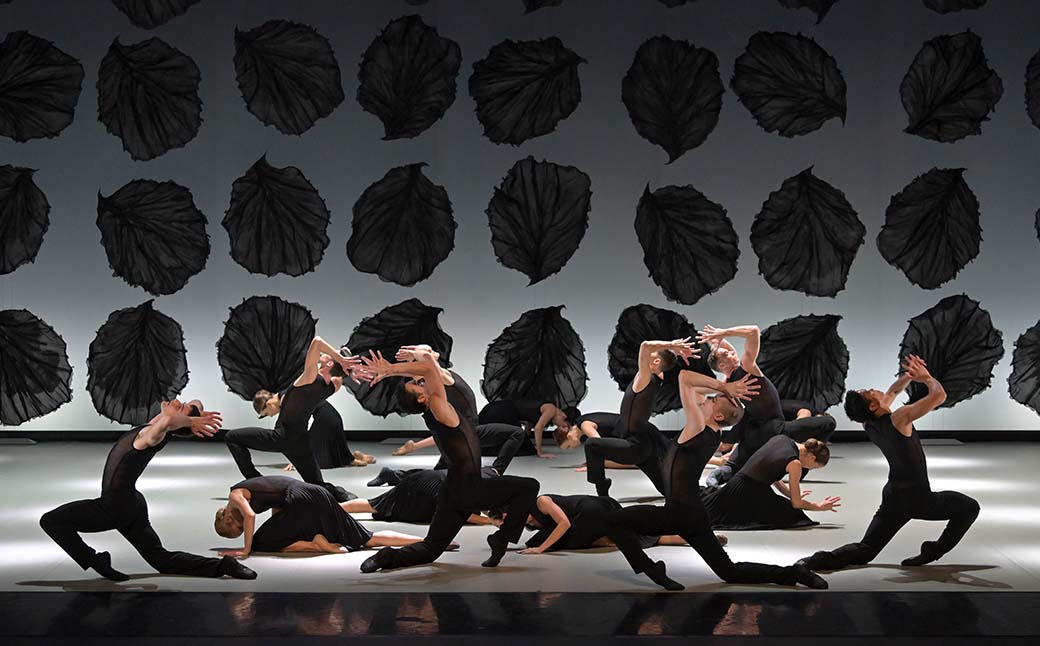France’s Magnificent Malandain Ballet Biarritz makes its Philadelphia Debut

Artistic Director Thierry Malandain founded Ballet Biarritz in 1998 when the French Ministry of Culture and Communication and the city of Biarritz appointed him to head a new national choreography center. Today, the company is a European favorite, reaching 100,000 people through nearly one hundred performances each year.
Born in Petit-Quevilly (Seine-Maritime) in 1959, Malandain has an eye for the unconventional. He trained as a classical dancer with Monique Le Dily, René Bon, Daniel Franck, Gilbert Mayer and Raymond Franchetti and performed with the Paris Opera Ballet, the Ballet du Rhin and the Ballet Théâtre Français de Nancy. A prolific choreographer of 80 works, Malandain was appointed to the Académie des beaux-arts in 2019. His numerous awards include:
- The Critics' Prize at the International Ballet Festival of Havana for Les Créatures in 2003
- The Culture Award from the Sabino Arana Foundation in Bilbao in 2005 and 2006
- The Grand Prix for Une Dernière chanson from the Syndicat de la Critique Théâtre, Musique et Danse in 2012
- The Taglioni European Ballet Award for Best Choreographer for his production of Cinderella in 2014
- Best Company Award for Noé by the Association Professionnelle de la Critique in 2017
- Three nominations for the coveted Benois de la Danse Award for Les Créatures (2003), L'Envol d'Icare (2006) and Noé (2019)
The Seasons is the brainchild of Laurent Brunner, the director of Château de Versailles Spectacles and Stefan Plewniak, the violinist and principal conductor of the Royal Opera of Versailles. They wanted to merge Antonio Vivaldi’s celebrated and popular composition, The Four Seasons, published in 1725, with a work titled The Four Seasons of the Year by lesser-known, more mysterious composer Giovanni Antonio Guido.
Guido’s work first appeared in 1716 at an opening exhibition of four oval paintings of nature by Jean-Antoine Watteau. Both composers were in residence at the Royal Opera of Versailles in the early 18th century, and scholars suggest Guido’s work may have inspired Vivaldi. Their musical compositions explored themes of nature and humanity and contributed to the Baroque canon, recognized for its grandiose style, drama and energy. Their work ran parallel to the development of ballet in France, as the Paris Opera Ballet, the oldest national ballet company in the world, was founded as the Royal Academy of Dance just a half-century prior in 1661 by King Louis XIV.
The Royal Opera of Versailles commissioned Thierry Malandain to create The Seasons, and his masterly choreography is full of surprises and wonder as he tackles each of the four parts. His contemporary aesthetic—flexed feet, angular arms, weighted swings, falls, floorwork, parallelism, twitches and gestures—is juxtaposed with classical ballet’s display of elegance, grace, extension, lightness, soaring jumps and floating lifts. The remarkably trained dancers’ bodies are a pure delight to watch—full of sensuality, precision, lushness and athleticism—as they interpret Malandain’s choreography with fluidity and ease.
In researching The Seasons, I was struck by the opening image of 22 dancers in black, fitted costumes in front of Jorge Gallardo’s eye-catching yet ominous backdrop of black petals. This silhouette tableau for “Spring,” usually envisioned as a time for renewal and rebirth, raises questions of humans’ role in the natural world and how it may be threatened by climate change.
Costumes vary from season to season. Unlike classical dance, there is no point work, so dancers wear soft ballet slippers throughout the production. The décor remains the same throughout but is enhanced by lighting and color. There is a nod to Baroque fashion in a quartet movement that has dancers costumed in silver and gold jackets for men and bodices with hooped-like skirt underlays for women to create a courtly aura.
“Winter,” my personal favorite, features dancers in short, flesh-colored unitards with glove-like sleeves of black, floating fabric attached to their arms. This clever use of a prop serves to elongate and energize the stage space and the dancers’ bodies. Are they wings, the wind, a creature or a flower? Might they represent life, death or renewal? The costume choice brings new awareness to the music while evoking fascinating images and sensations. “Winter” features a stunning soloist dancing low-grounded movements, morphing into a romantic duet, then a quartet. The work closes with both music and choreography building in volume and energy, culminating in the full ensemble filling the stage with elegance, delight and awe. Classique News declared that The Seasons is “virtuosic, refined, sensitive as well as spectacular. An unmissable ballet.”
Through this beautiful work, we discover the glory and frailty of humanity in relationship to the natural world. Join us May 2-3 for Malandain Ballet Biarritz’s much awaited debut and rare U.S. appearance.


